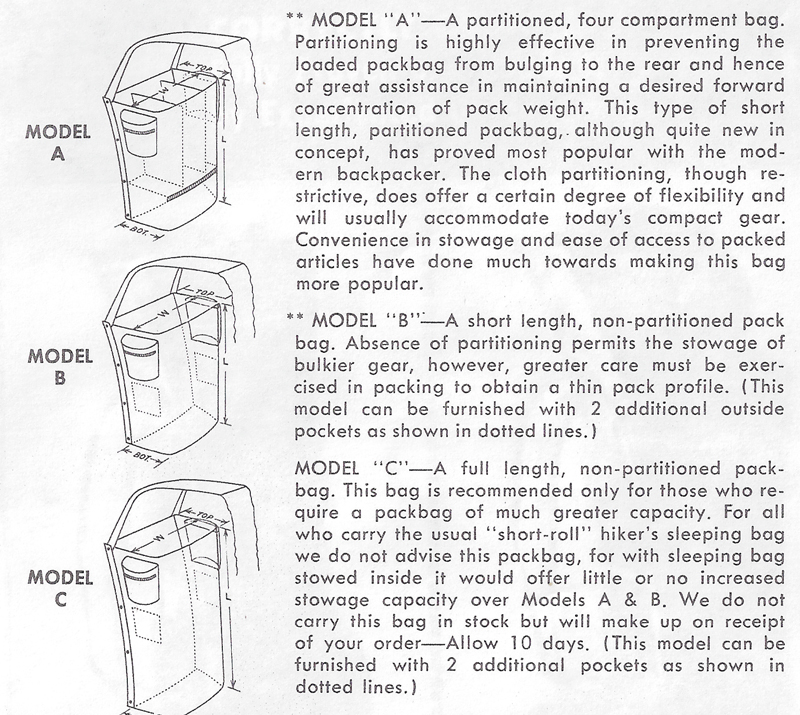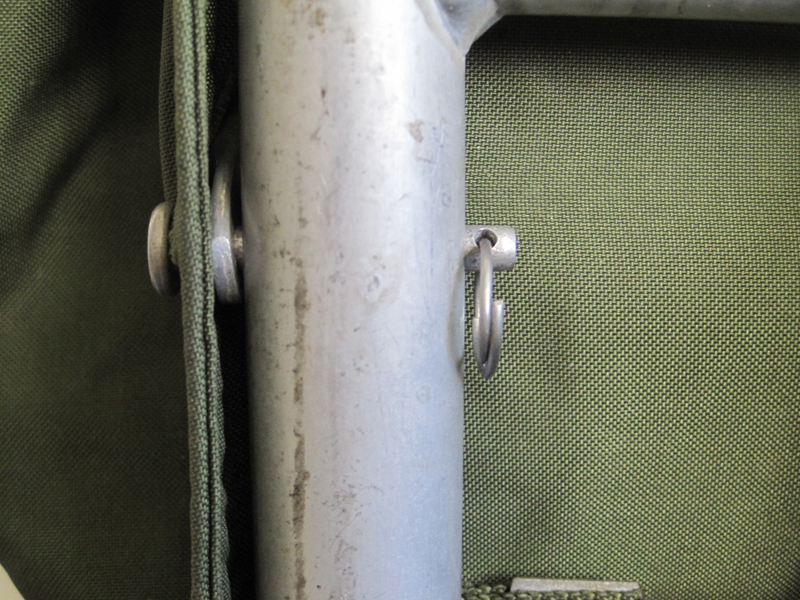In the 1960’s my first pack was a Boy Scout pack I bought at a swap meet. I think it was an Antelope brand. That pack is long gone. From 1971 until 2008 my main pack was a Kelty D4. I had several other special packs, but this D4 was probably used over 90% of the time.
Note of interest: In January 2012 I decided to take a trip with my old Kelty D4 pack and noticed that the seam in the divider between the upper and lower compartment had separated along most of its length. I contacted Kelty to see if they could repair it, expecting to pay for the repair. They emailed me a form to fill out and attach to the pack bag. Three weeks later I got it back and it had been expertly repaired at no charge. The form said it was covered under warranty – 41 years after I bought it.
During the 60’s and 70’s Kelty packs were the dominant pack in the market. Seemed like everyone had a Kelty. So I thought I would start out with a little Kelty history.
KELTY
Kelty History (from the Kelty Website)
1952:
Dick Kelty hand forms and welds packframes in his garage, while wife Nena sews each pack bag. First packs to use aircraft-aluminum contoured frames, padded shoulder straps, waist belts, clevis-pins, nylon pack cloth, sell 29 packs for $24 each
1953: sales triple to 90 back packs
1954: sales now more than double to 220 packs in this year
1956:
Dick Kelty quits his carpentry business to focus on Kelty Packs full-time. Opens first retail store and “factory” in an old barber shop in Glendale, California.
1962: retail and mail-order divisions are moved to a larger building on Victory Blvd.
1965: backpack rain covers are introduced.
1966: Kelty packs are used on the National Geographic Antarctica expedition.
1968: production facility is moved to a new factory in Sun Valley, California.
1969: new BB5 pack is introduced in red with a large main compartment and five outside pockets.
1970: Dick Kelty designs and produces the first stainless steel, quick-release waist belt buckle used on a back pack.
1972: Boston-based CML, Inc. purchases Kelty, and Dick remains chairman through CML’s six years of ownership.
1973: introduces the Tioga and Serac packs, the first new designs since the early 1950’s.
The following information I gathered from some receipts and old brochures. I think it is fairly accurate.
In the early 1960’s Kelty offered two external frames and three pack bags. You ordered the frame and bags separately.
The Backpacker frame had 4 cross members and Mountaineer frame had 5 cross members.
 Above: (Left) Mountaineer Frame, (Right) Backpacker Frame.
Above: (Left) Mountaineer Frame, (Right) Backpacker Frame.
Pack bag options were:
Models A, B, and C. Model C was not kept in stock and was a special order item. I have never seen one.
In 1973 the Serac was introduced. This came on the Mountaineer frame only with an extension crossbar, was a full length bag, with a separate bottom compartment meant for a sleeping bag. The extension bar could be extended higher. It came with 4 external side pockets, a front pocket under the flap, attachment patches and an ice ax loop.
Sometime in the 80’s a larger Serac was introduced. I think it was called the Serac Expedition, but am not sure.
My Experiences with Kelty
Prior to 1971 I knew nothing about Kelty packs, except I had seen a quite a few on the trail. When I got out of the service, I flew into LAX, close to my parents’ home, landing in the evening. I really didn’t know what I wanted to do with my life, but had saved enough money to live for a year without working. I had around $2,000. So I went to the ticket counter and asked where the next flight out was going. Fresno. Well I had been to Fresno before, so I took the plane. I got a hotel room and wandered around Fresno for a day or too. Then I decided to go backpacking for a few months. I found a mountaineering store and as chance would have it, purchased a Kelty pack and a down sleeping bag, along with a few odds and ends. I bought some additional gear at an Army surplus store, kept some of the things I had in my luggage, threw most the rest of the luggage and contents away, sent a few things home, and sat down to plan a trip. As it turns out, the winter of 1971 had one of the biggest Sierra snowfalls in history and there was no way I could enter the Sierras from Fresno. So I hitch-hiked to Kernville and spent the the 2nd half of April, May, and June hiking around the southwest part of the Sierras. As the snow melted I headed north almost to Yosemite Valley, didn’t like the crowds, turned around and hiked back to Kernville. By now it was mid September or so, and I went home.
I did another big trip in 1972 with pretty much the same gear, except for a white gas stove. When I returned in late ’72 I got a full time job. But I still hiked whenever possible.
Around ’73 I bought a Serac model. This was meant only to be used on trips where I needed more capacity, such as in winter snow. Sometime during the mid seventies I found out that Kelty had been sold to another company, and worried that they would discontinue the line of packs, I purchased an early Kelty Model B with the optional two external pockets, mounted on a Mountaineer frame, from the original owner. This pack was brand new, never used. Since my fears about the D4 wearing out or would break never happened, this 50 year old pack has never been used.
In 1977 I bought a used Kelty A model for my first wife. The original owner had used it once, on a 3 day trip. My wife used it only once, on a 7 day trip and decided backpacking was not for her. I used it a few times also. So this Model A pack is in almost new condition too and around 50 years old.
Sometime in the mid 80’s I wanted an even bigger pack to haul water in the desert and for winter trips, mostly in the San Jacinto and San Bernardino Mountains. Also kids were on the “to do list” and I anticipated family backpacking trips, so I bought the Serac Expedition. That pack has been used quite a bit, but the original 1971 D4 was the work horse until I switched to internal frame packs in 2005.
Identifying the Age of Kelty Packs
I don’t know what kind of logos Kelty use in the 50’s, but from the early 60’s until 1973 Kelty used a triangular logo patch with mountain in the in the background and an arrow behind the Kelty name. Until 1963 or so, it also included “Glendale 1, CALIF” under the Kelty name. Around 1963 the Zip Code was added after Calif. In 1968 when Kelty moved the manufacturing to Sun Valley, the logo was “SUN VALLEY, CALIF 91352.” The logo was changed again in 1972 after Dick Kelty sold the company with a more modern background and no city or state.



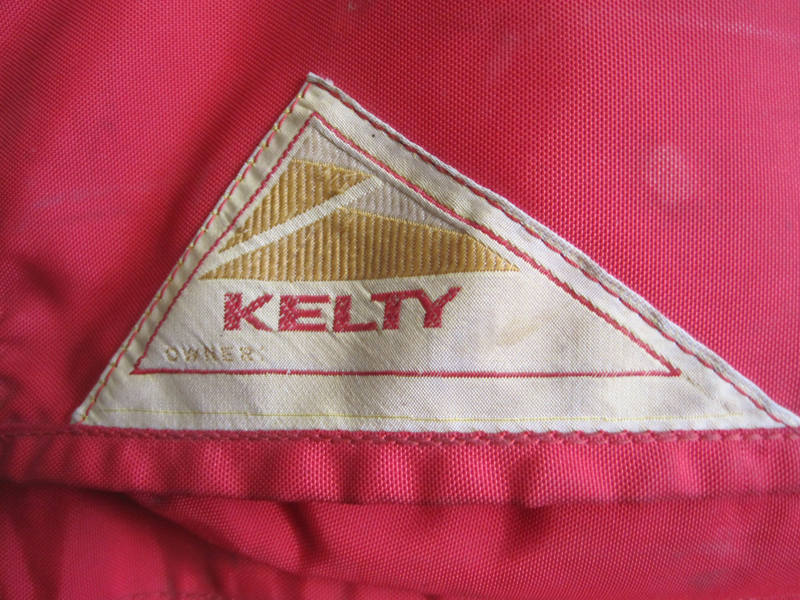
Model B Bag
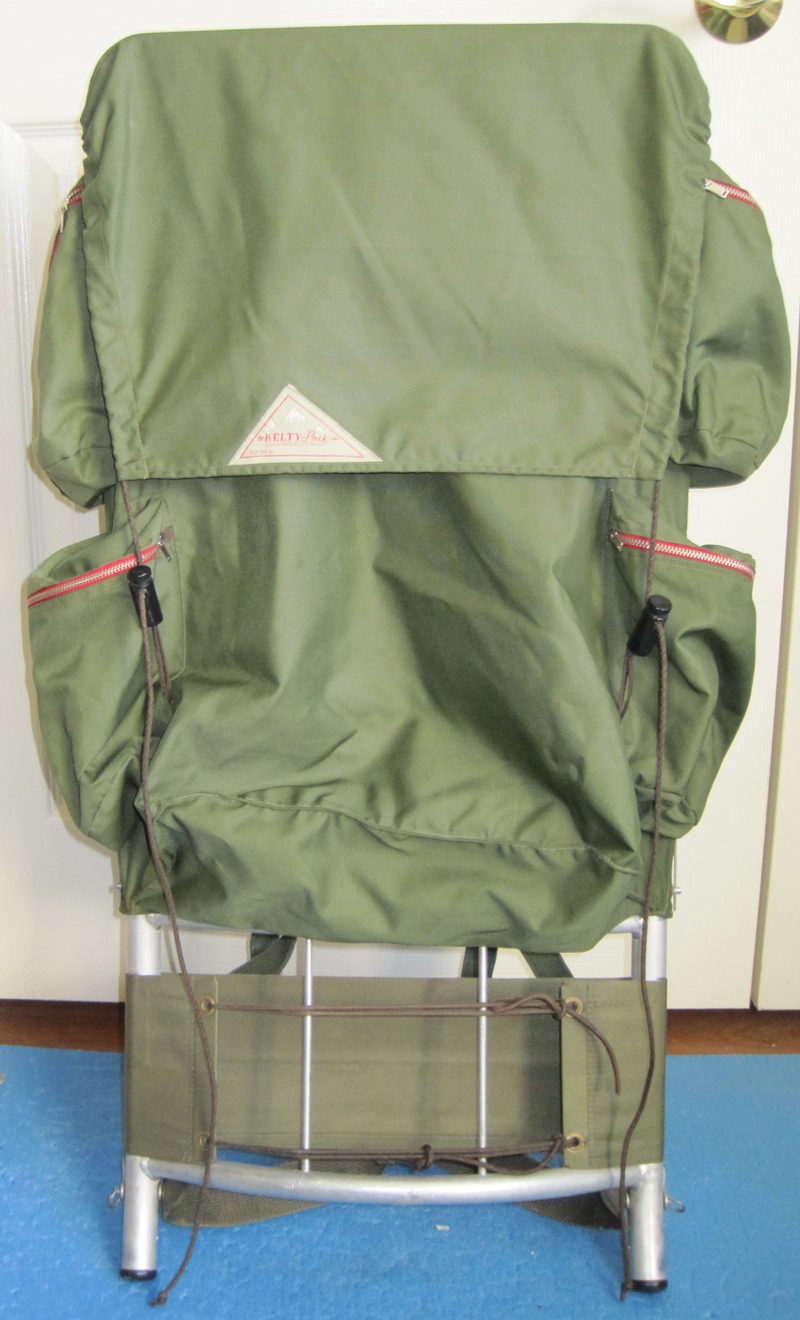


Model A Bag
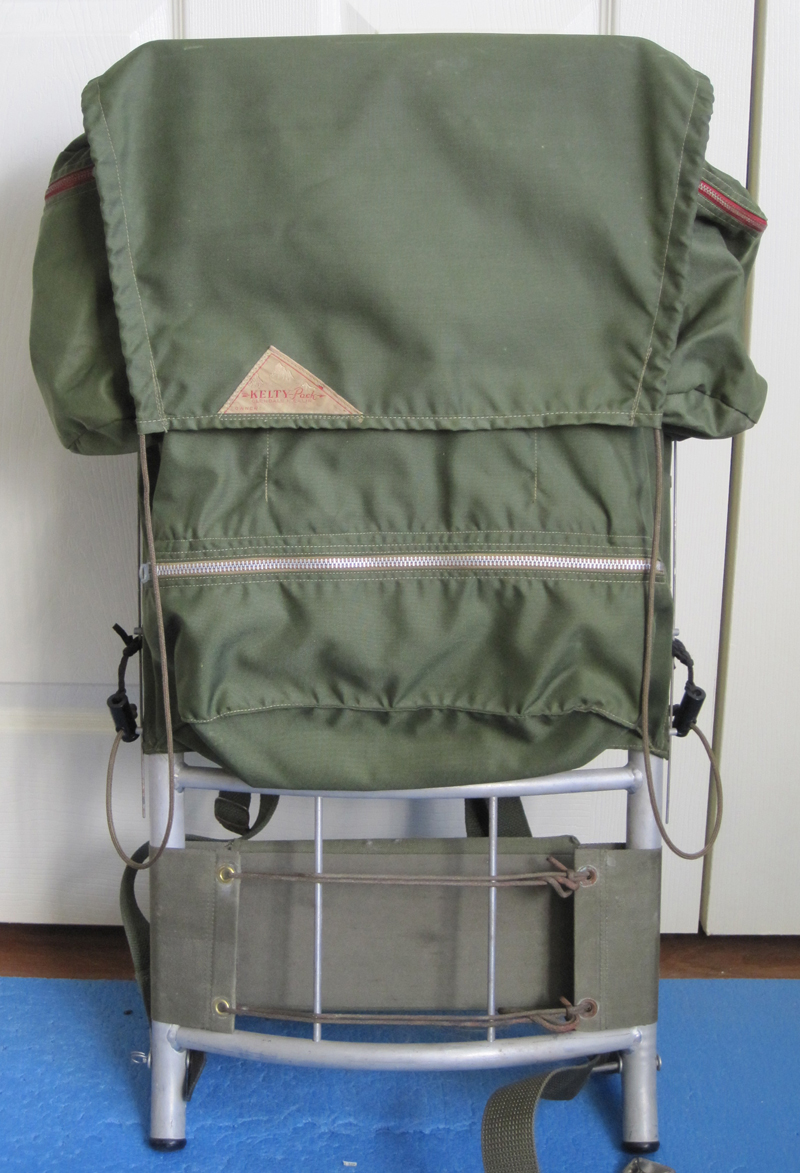
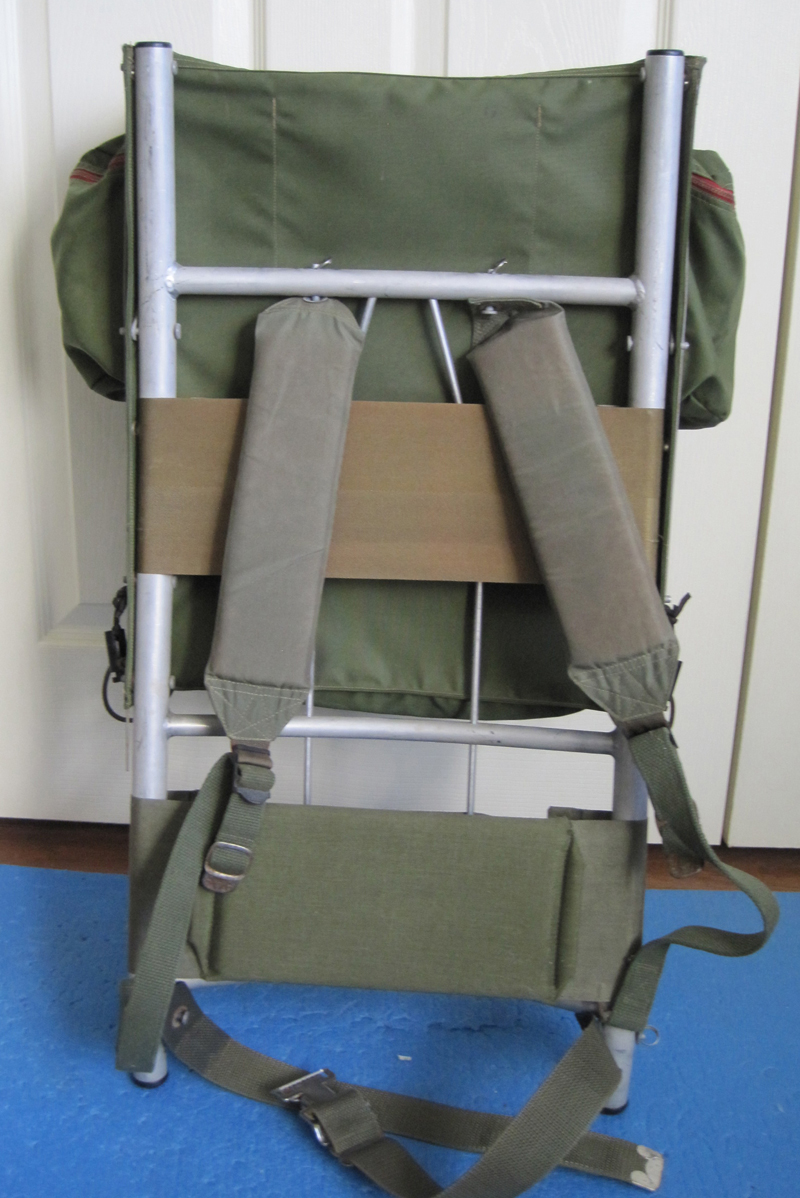
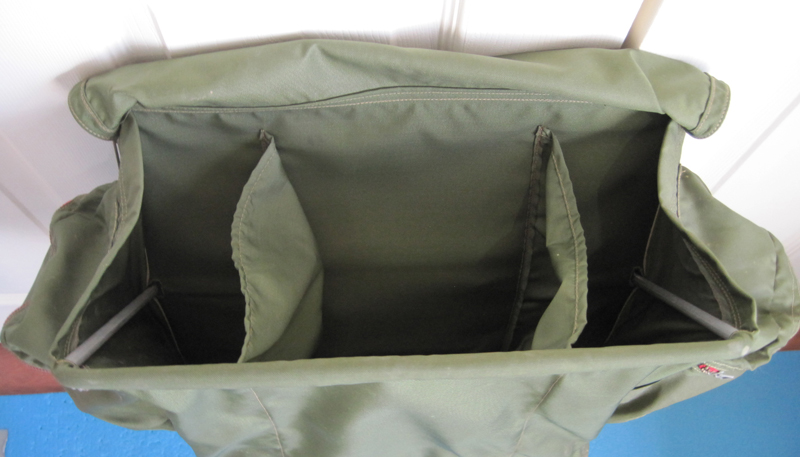
Model D4 Bag


Those are not the original pack straps, the originals wore out many years ago, probably around 1977. Note the wrap-around hip belt. This was a Kelty option, and I think it may have been introduced in the early 60’s sometime. The belt buckle is the famous Kelty Cam-lock buckle. It worked so well that many owners of other brands of packs switch to these. They were sold in many stores, such as R.E.I. The original lower band is now on the Model A pack shown earlier. Also the original belt on this pack was made from nylon instead of canvas and had a metal quick release buckle. Notice that the top back band is now made from a nylon mesh material instead of solid nylon.


One thing that I did not show was the optional cross-over frame extension that was later standard on the Serac models. I added one to the D4 when I purchased the pack, allowing me to carry additional gear on the top of the pack. When I later bought my first Serac, I removed the bar from the D4.




On one trip I mangled and bent the key wire on some brush, so I removed the Key Wire and used circular wire to hold the clevis pins securely (above). I had intended to get new Key Wires, but never got around to buying them. Remember, in those days there were few retail outlets or Internet, so most things I purchased were via mail order. The Key Wires are no longer available from Kelty. Securing the bag clevis pins with a wire hook shown.

Serac Model introduced in 1973

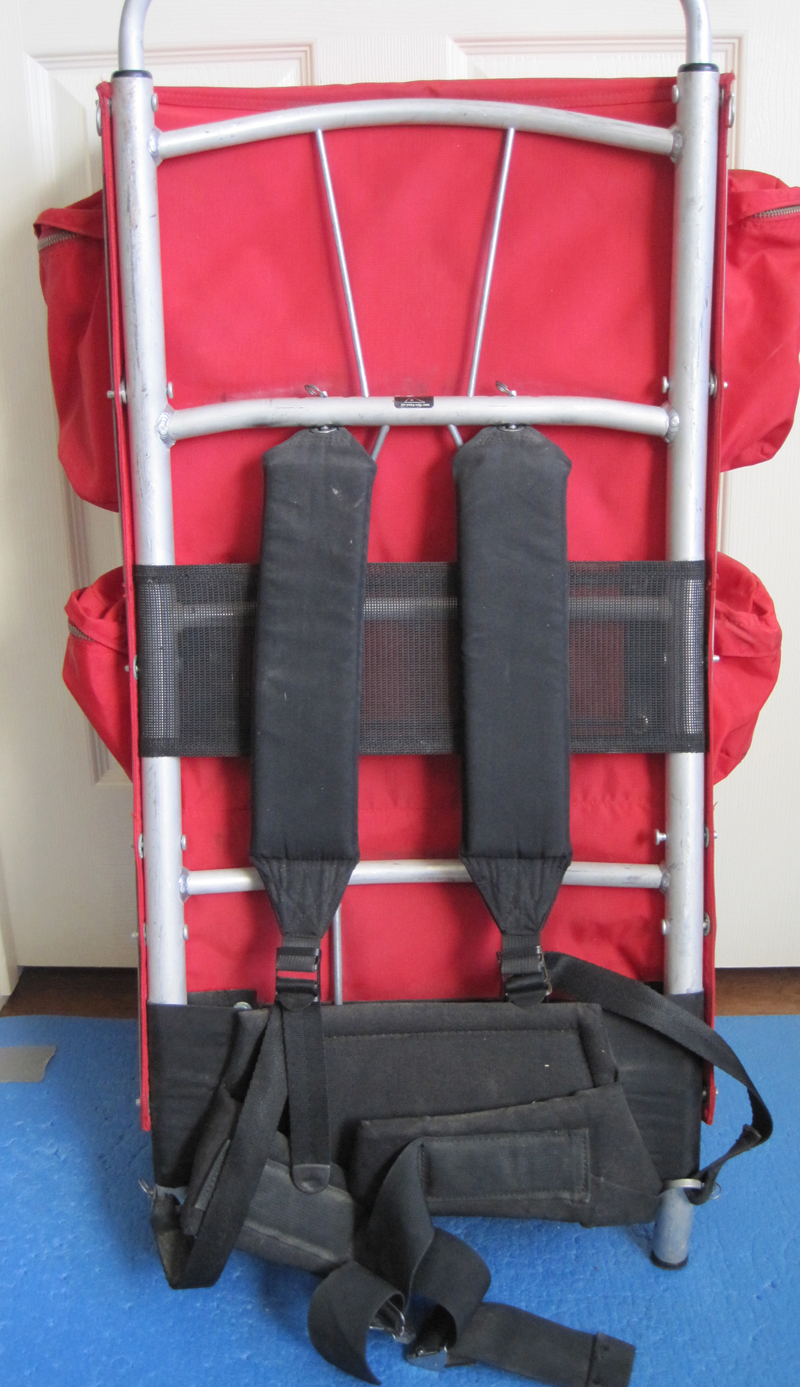

Serac Expedition


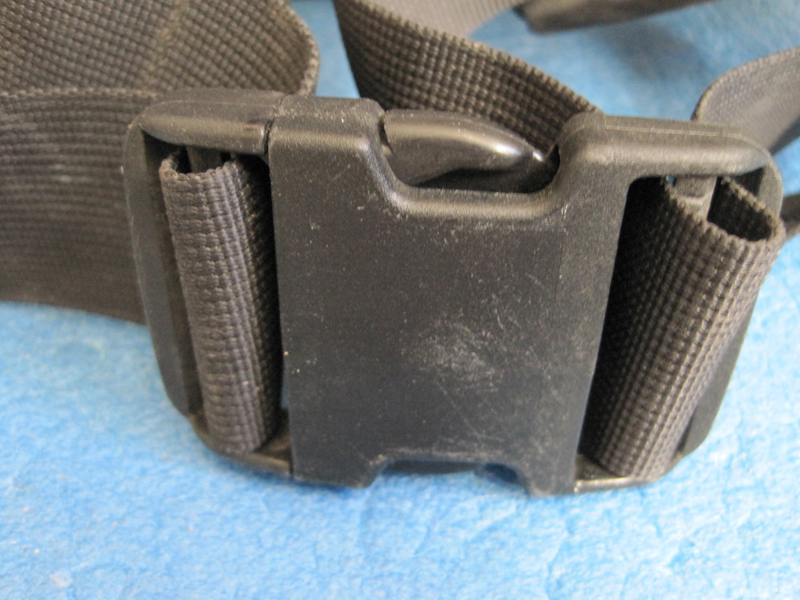


Hope you liked this little walk through history.

